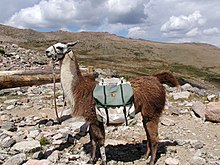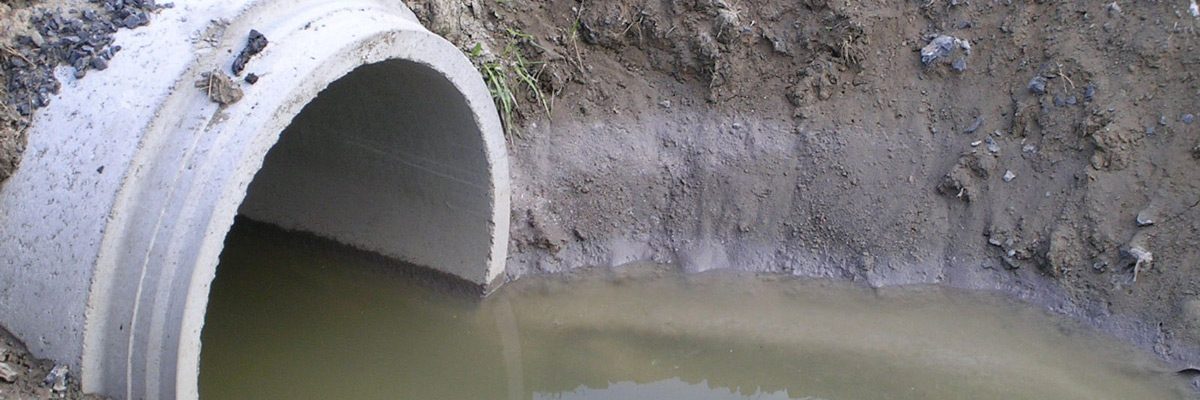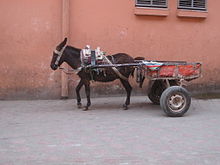This post was really difficult for me. Riding animals has been a human practice for thousands of years and still is in use in many parts of the world. From dog sleds in the north to camels in the south and horses all inbetween many hundreds of animals have been used to haul humans and freight. In some places humans even haul people in what Americans usually refer to as rickshaws. I contemplated making this a multiple post but the biggest question for me is how this move back to animals as a major form of transportation would restructure our world. How would we feed them all? How quickly would it happen? How many people would have to give way for all of the offset food? Anyway there are so many ways I could have diced this pie that a simple post will have to do. Please try not to think about how much manure this would generate.
Some animals are used due to sheer physical strength in tasks such as ploughing or logging. Such animals are grouped as a draught or draft animal. Others may be used as pack animals, for animal-powered transport, the movement of people and goods. People ride some animals directly as mounts, use them as harness one or a team to pull vehicles.
Riding animals or mounts
They include equines such as horses, ponies, donkeys, and mules; elephants; yaks; and camels. Dromedary camels in arid areas of Australia, North Africa and the Middle East; the less common Bactrian camel inhabits central and East Asia; both are used as working animals. On occasion, reindeer, though usually driven, may be ridden.
Certain wild animals have been tamed and used for riding, usually for novelty purposes, including the zebra and the ostrich. Some mythical creatures are believed to act as divine mounts, such as garuda in Hinduism and the winged horse Pegasus in Greek mythology.
Pack animals

A pack llama
Pack animals may be of the same species as mounts or harness animals, though animals such as horses, mules, donkeys, reindeer and both types or camel may have individual bloodlines or breeds that have been selectively bred for packing. Additional species are only used to carry loads, including llamas in the Andes.
Domesticated oxen, bullocks, and yaks are also used as pack animals. Other species used to carry cargo include dogs and pack goats.
Homing pigeons transport material, usually messages on small pieces of paper, by air.
Harness animals
An intermediate use is to harness animals, singly or in teams, to pull (or haul) sleds, wheeled vehicles or plough.
- Oxen are slow but strong, and have been used in a yoke since ancient times: the earliest surviving vehicle, Puabi’s Sumerian sledge, was ox-drawn; an acre was originally defined as the area a span of oxen could plow in a day. The Water buffalo and Carabao, domesticated water buffalo, pull wagons and ploughs in Southeast Asia and the Philippines.
- Draught or Draft horses are commonly used in harness for heavy work. Several breeds of medium-weight horses are used to pull lighter wheeled carts, carriages and buggies when a certain amount of speed or style is desirable.
- Mules are considered to be very tough and strong, with harness capacity dependent on the type of horse mare used to produce the mule foal. Because they are a hybrid animal and usually are infertile, separate breeding programs must also be maintained.
- Ponies and donkeys are often used to pull carts and small wagons, historically, ponies were commonly used in mining to pull ore carts.
- Dogs are used for pulling light carts or, particularly, sleds. (e.g. sled dogs such as Huskies) for both recreation and working purposes.
- Goats also can perform light harness work in front of carts
- Reindeer are used in the Arctic and sub-Arctic Nordic countries and Siberia.
- Elephants are still used for logging in South-east Asia.
- Less often, camels and llamas have been trained to harness. According to Juan Ignacio Molina the Dutch captain Joris van Spilbergen observed the use of chiliquenes (a llama type) by native Mapuches of Mocha Island as plough animals in 1614.[1]
Assorted wild animals have, on occasion, been tamed and trained to harness, including zebras and even moose.
:}
More tomorrow.
:}

